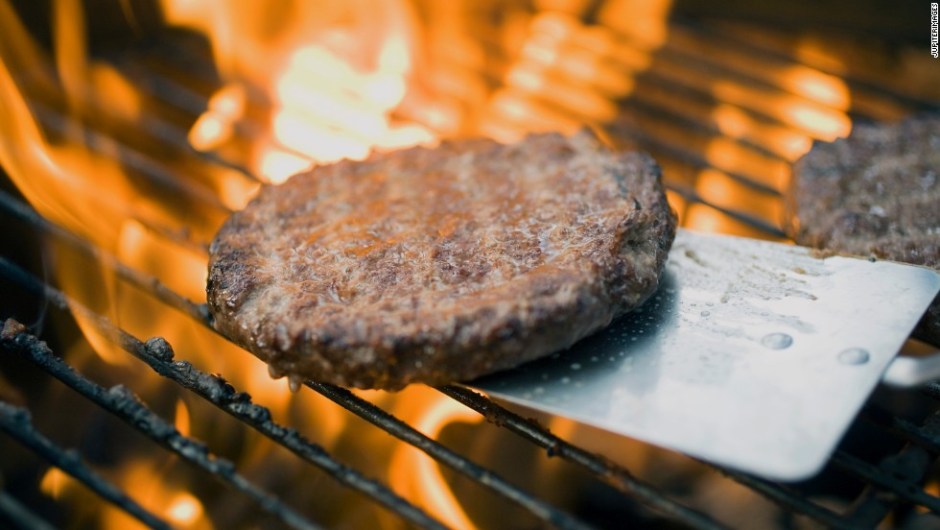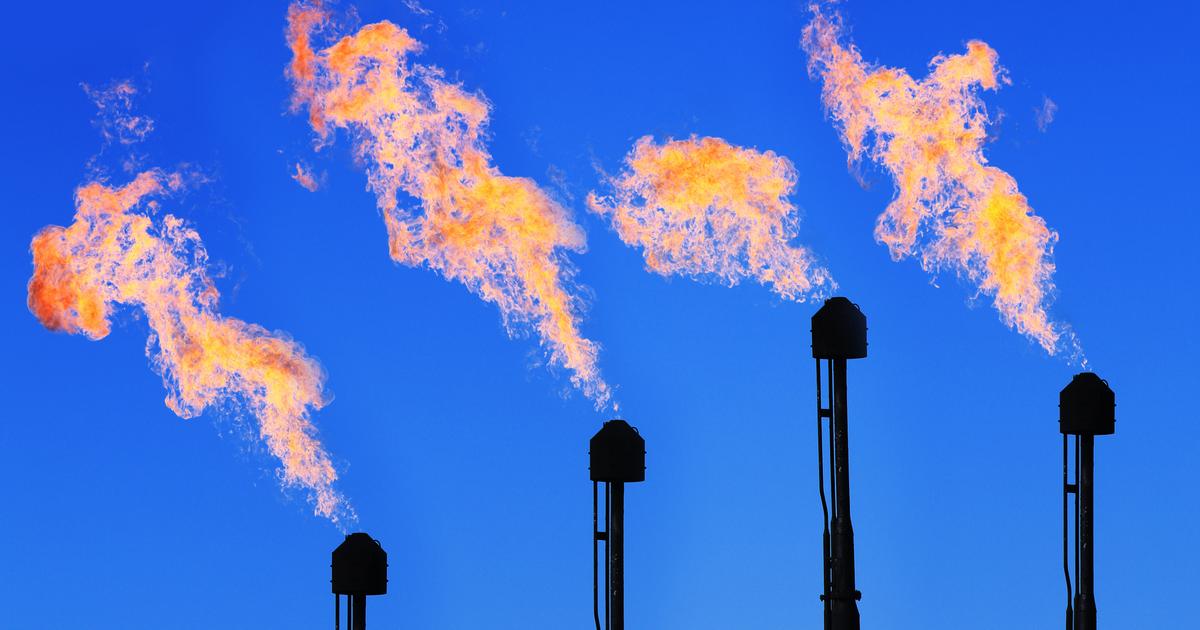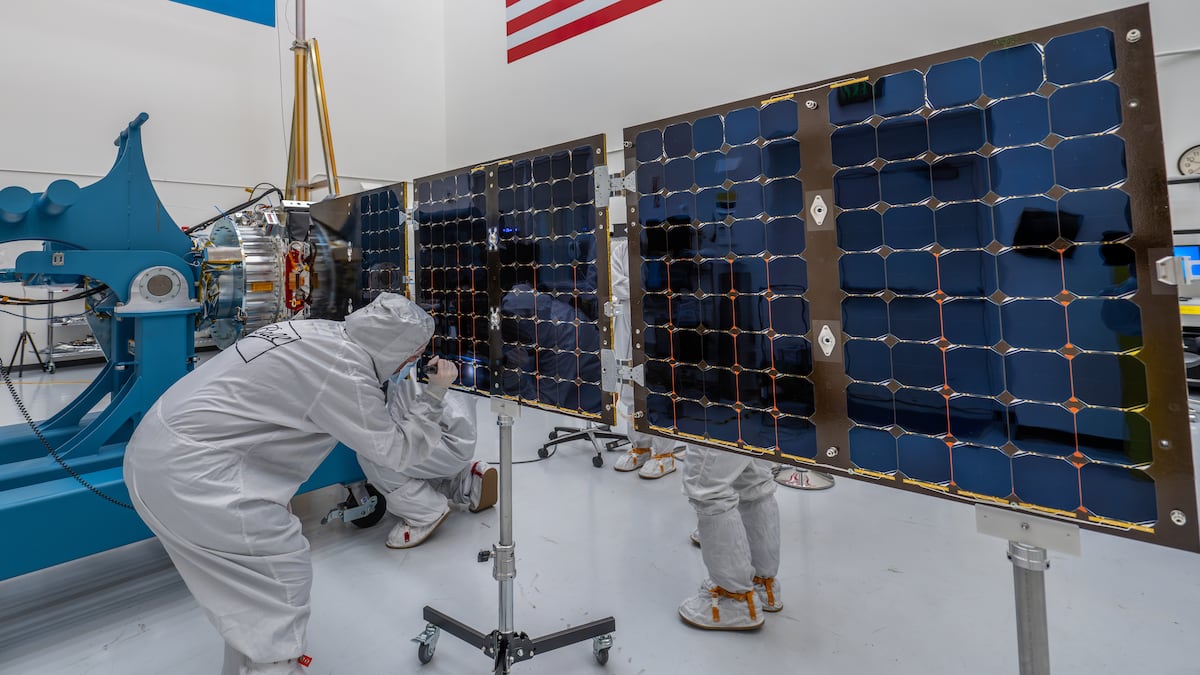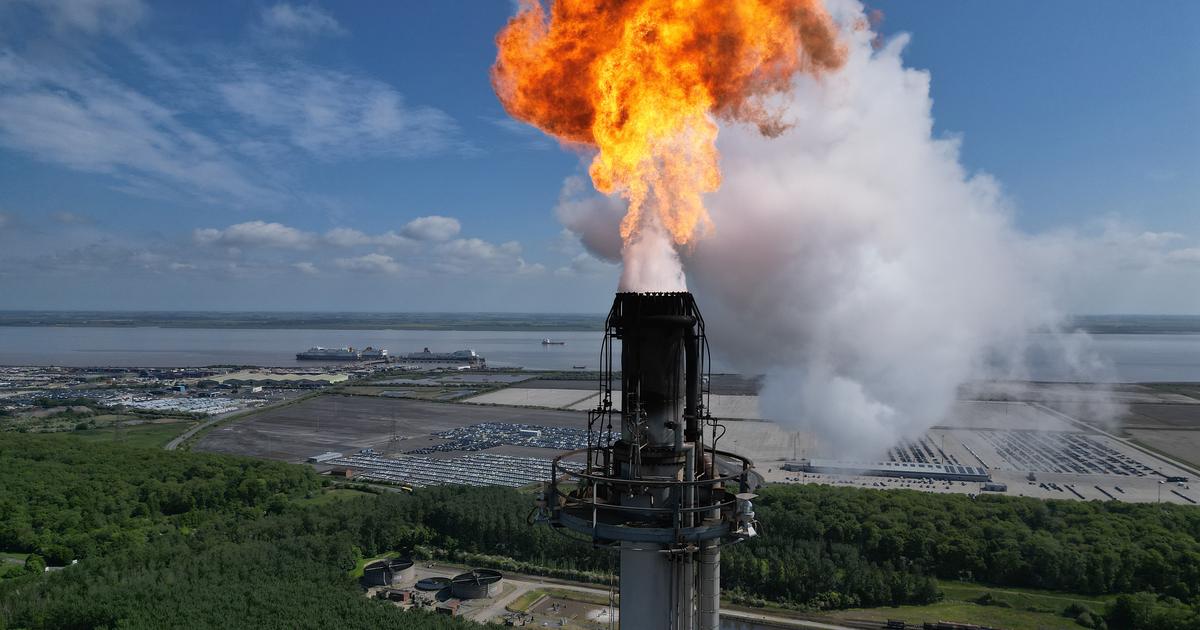Why do livestock harm the environment?
3:49
(CNN) ––
Cows produce meat, milk and a lot of methane.
Methane is a byproduct of digestion that occurs at both ends of cows.
However, more than 90% reach the atmosphere through their burps.
LEE: World meat production must reach its peak in 2030 to combat climate change
The consequences of methane from cows
Therefore, this is a problem.
Methane is a powerful greenhouse gas, trapping 28 times more heat than carbon dioxide over 100 years.
As the world's appetite for beef has grown over the past two decades, annual methane emissions increased 9% per year.
According to the UN Food and Agriculture Organization (FAO), livestock account for almost 10% of the greenhouse gases generated worldwide by human activity.
Now FutureFeed, a startup, claims to have a solution.
The Queensland-based venture was established last month by the Commonwealth Scientific and Industrial Research Organization (CSIRO), the Australian government's scientific research agency.
This algae could help reduce methane emissions.
Algae: a solution?
Now, the organization hopes to make burping cattle no longer a problem.
How?
By including in the diet of cows a pink-red algae, similar to a fern, called asparagopsis.
To do this, it is assisted by four other investors, including Australia's largest supermarket chain, Woolworths.
When lyophilized and fed to cows as a supplement, asparagopsis removed methane "below the detection limits of our instruments" in tests.
This was pointed out by Michael Battaglia, director of research at CSIRO and director of FutureFeed.
When scientists first tested the algae, they worked so well that they believed their equipment was damaged, he added.
FutureFeed attributes the destructive influence of seaweed against methane to a compound called bromoform.
This substance prevents microbes in the cow's guts from producing the gas.
Many algae contain small amounts of bromoform, Battaglia explained.
However, asparagopsis is unusual in that it stores large amounts of the compound in special cells on the surface of its fronds.
1 of 10
|
Meat is widely recognized as the most damaging food for the climate.
A new study on food and pollution from global warming in the United States published by the Natural Resources Defense Council says that each kilogram of meat produces 26.5 kilograms of carbon dioxide (CO2) emissions, the highest amount of all research, which is five times that of chicken and turkey.
Animal agriculture is responsible for 14.5% of greenhouse gas emissions worldwide, according to the Food and Agriculture Organization of the United Nations (FAO).
Look through this gallery to see more foods that are bad for the environment.
2 of 10
|
Another ruminant, lamb, is in second place on the list of the 10 foods that do the most damage to the environment, which confirms that red meat is one of the foods that uses the most resources and, therefore, one of the most harmful to the climate.
For every kilo of lamb consumed, 22.9 kilos of CO2 are emitted into the atmosphere, according to the Council for the Defense of Natural Resources.
3 of 10
|
A little further, but just as bad for the environment, butter appears: each kilogram of butter is equivalent to 12 kilograms of carbon dioxide, almost half of that produced by beef.
Butter is the most climate-damaging dairy product because its preparation involves many energy-consuming steps.
4 of 10
|
Each kilo of shellfish can cost the environment 11.7 kilos of CO2, according to research done in the United States by the Natural Resources Defense Council, an international non-profit environmental organization, founded in 1970. According to the Council Americans have been cutting back on seafood since 2005.
5 of 10
|
Another dairy product, cheese, appears in fifth place in the 10 most harmful foods for the environment, with 9.8 kilos of CO2 emissions for every kilo produced.
And things get worse when cheeses require refrigeration to be transported and airlifted to other countries, which has greater impacts on the climate.
6 of 10
|
In the list of the 10 foods that do the most damage to the climate there is a vegetable: asparagus.
For every kilo of asparagus produced 8.9 kilos of CO2 are emitted.
The reason is, above all, in the air miles.
Almost all the asparagus consumed in the United States comes from Latin America, which means that gigantic greenhouse gas emissions have been made to reach the plate on the table.
7 of 10
|
Every kilo of pork that is produced releases 7.9 kilos of carbon dioxide, according to the study by the Council for the Defense of Natural Resources, which analyzed 197 food products.
Another meat on the list.
8 of 10
|
Another food that belongs to the supply chain for cattle and dairy: veal.
However, it has a lesser impact than beef, because calves are slaughtered when they are very young, usually when they are 20 weeks, compared to the 18 months that on average is expected to kill a cow.
Each kilo of beef produces 7.8 kilos of CO2.
9 of 10
|
While eating less chicken is one of the biggest contributors to reducing food-related greenhouse gas emissions per capita in the United States, poultry products remain in the top 10 most damaging to the climate, with around 5 kilograms of CO2 for every kilogram produced of that food.
10 of 10
|
And closing the list is turkey, which has the same carbon footprint as chicken, with about 5 kilos of CO2 for every kilo produced.
Tons of seaweed to tackle the cow's methane
The results of science are clear.
However, a major obstacle remains: there are not enough asparagopsis.
Precisely, until recently, asparagopsis only grew in the wild and divers had to collect it by hand.
So, as its potential for the livestock sector becomes apparent, a fledgling industry prepares to grow it on a commercial scale.
Sam Elsom is founder and COO of Sea Forest.
Based on the east coast of Tasmania, the company is a pioneer in the cultivation of high-bromoform asparagopsis.
The company also works closely with FutureFeed to market the seaweed as a feed supplement for livestock, he said.
Under this objective, Elsom secured a marine lease of 100 hectares, where he grows asparagopsis in ropes.
"The algae are planted in the lines that then unfold in the ocean," he explained.
Cows, like these in Connemara, Ireland, often choose to nibble on seaweed when feeding near the sea.
Can you grow algae on land?
Seaweed is also grown on land, in large aerated tanks filled with fresh ocean water and ponds with channels.
These structures are equipped with pedal wheels that circulate the water, Elsom said.
Sea Forest develops a variety of agricultural techniques with the goal of licensing its cultivation models to producers elsewhere, according to Elsom.
Asparagopsis is native to Australia and flourishes in the nutrient-rich waters of Tasmania, he said.
However, she clarified that in other parts of the world and in areas far from the sea, cultivation of the land could be the best option.
Now, even with the best technology: will it be possible to grow enough asparagopsis to do something significant about the methane problem?
35,000 tons of algae
Battaglia estimated that Australia would need 35,000 tonnes of dried seaweed per year to feed asparagopsis to all dairy cows and cattle in feeder units.
That is, intensive feeding pens where cows get fat before slaughter.
Sea Forest currently expects to harvest 500 tons of dried asparagopsis per year at its pilot facility.
In addition, it has plans to triple the annual harvest by 2022, according to Elsom.
Sea Forest grows asparagopsis on a marine farm off the Tasman coast.
As for Australia, the country would need algae farms covering about 10 square kilometers to produce enough asparagopsis for its cows, according to Battaglia.
He believes that is possible.
Therefore, he is targeting the country's shrimp farms, which currently occupy a similar area.
So Australia is home to around 1% of the world's cow population, Battaglia detailed.
According to estimates for this country, feeding asparagopsis to dairy cows and livestock in feedlots around the world would require about 3.5 million tons of dry product a year, he said.
"Unrealistic"
For its part, the United States has the largest livestock feed industry in the world.
In the country there are more than 94 million animals of this type.
As a result, Alexander Hristov, a professor of dairy nutrition at Pennsylvania State University, says that according to his team's calculations, it would take "more than half of the world's algae production" to feed all the livestock in the US. with asparagopsis at 1% of their food intake.
In that sense, he added that scaling that to a global level is "unrealistic."
However, Battaglia pointed out that if asparagopsis is rich in bromoform, it would need to be only 0.2% of a cow's diet.
Additionally, FutureFeed estimates that if only 10% of the global livestock industry were to feed their cows an asparagopsis supplement, the positive climate impact would be significant.
He estimates that it may be the equivalent of taking 100 million cars off the road.
Sea Forest conducts laboratory research on asparagopsis culture.
Incentivizing farmers for an alternative to methane from cows
Asparagopsis cultivation will expand only if producers are confident that farmers will buy the seaweed supplement.
Battaglia is optimistic.
He says there is a "strong acceptance incentive" for farmers.
This is because asparagopsis not only reduces methane, it also makes cows grow faster.
Beef cattle at a feedlot in Illinois, USA.
Cows spend about 10% of their energy generating methane, Battaglia noted.
When they are fed asparagopsis, that energy is channeled into growth, he said.
FutureFeed will conduct large-scale trials later this year to collect data on the improved growth rates.
The long-term effects of algae
However, Hristov cautioned that the long-term effects of asparagopsis are unclear.
"There are many unanswered questions about the health (and) reproduction of animals," he noted, and algae can affect the quality of milk.
However, for now FutureFeed believes that asparagopsis is the best candidate to tackle methane emissions from cows.
Hence the company plans to help build a supply chain between seaweed producers and farmers.
All with the goal of bringing low-methane beef and milk to supermarket shelves by the end of 2021, according to Battaglia.
He pointed to the broader need to develop technologies that can help feed growing populations, while also fighting climate change.
"FutureFeed could be one of those options."
climate change Cattle Greenhouse gases Cows









